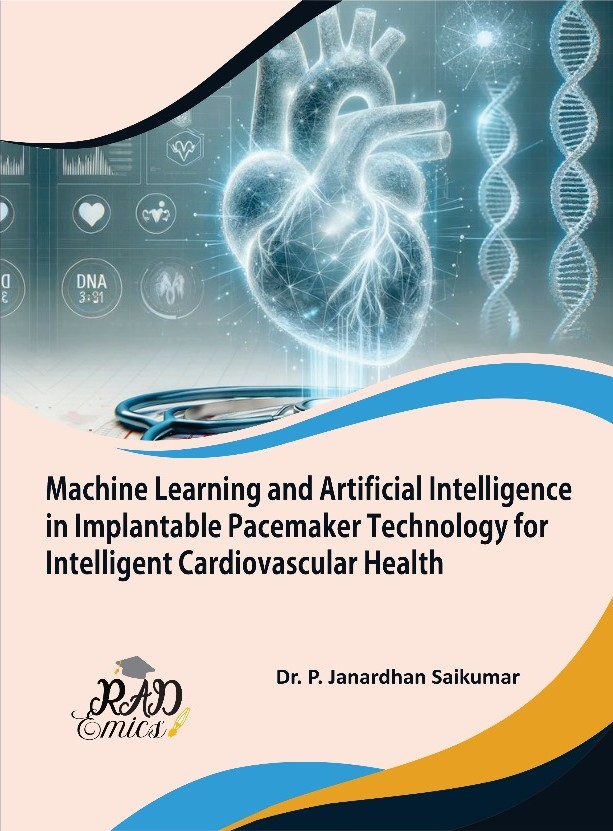
Abstract
Next-generation pacemaker devices are poised to transform cardiac care by integrating Edge AI technologies that enable real-time, autonomous decision-making within ultra-low power implantable systems. Unlike traditional pacemakers that rely on fixed algorithms and periodic manual reprogramming, Edge AI empowers these devices to process multi-modal physiological data locally, adapt pacing parameters dynamically, and respond instantly to changing patient conditions. This chapter examines the core principles, architectural requirements, and enabling technologies that make on-device intelligence feasible in life-critical cardiac implants. It discusses the design of ultra-low power microcontrollers, digital signal processors, and emerging neuromorphic computing architectures optimized for constrained environments. Lightweight AI algorithms, model compression techniques, and robust sensor fusion strategies are explored as critical tools to achieve high diagnostic accuracy without compromising battery life. The text further addresses secure data handling, real-time operating systems for safety-critical tasks, and regulatory challenges unique to implantable medical AI. By synthesizing the latest research trends, design trade-offs, and open challenges, this chapter provides a comprehensive reference for engineers, researchers, and clinicians developing future-ready pacemakers that combine computational efficiency with advanced, patient-specific therapy.
Introduction
Pacemakers have played a vital role in managing cardiac arrhythmias for over half a century [1], evolving from simple fixed-rate stimulators to sophisticated devices capable of sensing intrinsic heart activity and adjusting pacing in response to basic physiological cues [2]. Despite this progress, conventional pacemakers still rely heavily on static [3], pre-programmed algorithms that must be periodically adjusted during follow-up visits [4]. This approach limits their ability to adapt to the complex and changing needs of individual patients in real time [5].
As the prevalence of cardiac arrhythmias rises globally, there was increasing demand for implantable devices that deliver more personalized, autonomous therapy [6]. The convergence of edge computing and artificial intelligence offers a compelling path forward [7]. Edge AI enables the execution of machine learning tasks directly within the implantable device, allowing continuous monitoring [8], local inference, and adaptive control without the need for constant wireless data transfer or cloud processing [9]. This paradigm promises greater responsiveness, lower latency, and enhanced patient privacy [10].
Integrating AI into a pacemaker’s compact hardware introduces significant design challenges [11]. Power consumption was a critical constraint, as any added computational load can directly shorten battery life and increase the frequency of replacement surgeries [12]. Ultra-low power microcontrollers, energy-efficient signal processing circuits [13], and optimized AI algorithms are all essential to maintain [14] the delicate balance between intelligence and longevity in an implantable context [15].